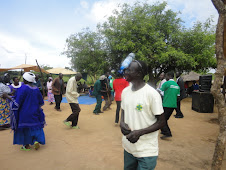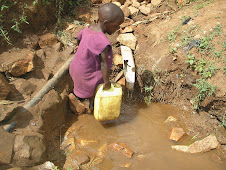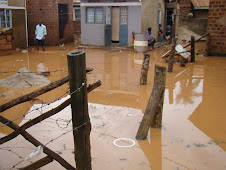I was attracted to investigate people’s insights on the girls’ urinals in schools. My research focused on how girls perceive the use of the girls’ urinals, factors for the success of the girls’ urinals were they exist, challenges faced and mechanism for further improvement.
Background of the Initiative:
Mirembe Infant primary school is a community-aided school located in Nateete parish, Rubaga division. The school has over 808 children with 463 girls and 345 boys coming from poor families in the slums of Nateete parish. Though facilitated with an 8 stance toilet facility by CIDI, the average pupil stance of 101:1 more than doubled the recommended 40:1 by the government. As a result, there were always long queues; pupils would spend 10-15 minutes waiting for their turn to use the latrine. Often the younger pupils were pushed out of the queue by the older ones, thus denying them access to use of toilet. Open defecation and urination was one bad practice that pupils had almost gotten used to. This was coupled with lack of privacy especially for girls especially in adolescent stage. Having heard about CIDI’s clean water and sanitation promotion projects in the poor communities, the school administration contacted CIDI with need to construct latrine facilities at the school that cater for girls’ washrooms and urinals.
Description of the initiative
Under her clean water and sanitation programme aim at improving the learning environment in schools, CIDI honoured the request of Mirembe and other schools by constructing Ventilated Improved Pit-latrines that are well designed with washrooms and urinals particularly for the girl child. This paper mainly focuses on the success of the girls urinals. Evaluation results from a pilot project implemented in 3 schools; MacKay Primary School, Nateete Muslim School and Capital primary school revealed that girls’ urinals have played a big role in reducing congestion in toilets as quickly return to class when using maintenance of the girls’ urinals. After evaluation it was agreed to scale up the project to 9 other schools; Mirembe P/School, Trust Preparatory school, Kasubi Family P/ School, Kisa P/School, Busega Kampala City Council, Nateete Muslim school, Kasubi Modern Islamic School, Salaaf Islamic P/School and Namungona Orthodox P/School.
Major drivers of the process and success
Successful implementation of this project is credited to:
-WaterCan for their financial support
-CIDI the implementer (her committed and creative staff)
-Schools for their participation in the implementation of the project and adopting the practice of using the girl’s urinals.
-Local leaders in Rubaga division for continued school inspections and guidance on operation and maintenance.
Lessons learned
-The achievements are being replicated in 10 more schools and hope to extend it in other schools.
-To achieve sustainability, School health and sanitation clubs were formed and trained in issues of operation and maintenance. Each of the targeted school has a club that consists of 50 pupils from different classes and it is governed by a general committee of seven members with support from the science teacher and school senior woman. The school administration also plays an important role in raising required resources for maintenance of the facilities. What still needs to be done is facilitating schools with health protective gears like gumboots, gloves, brushes to ease the work of
-Strengthening capacity building in operation and maintenance issues
-Limited land where Sanitation facilities can be constructed remains a challenge especially in targeted schools in the slums of Kampala.
-Getting targeted community to participate in the project implementation was very easy. However, proper operation and maintenance is still lacking.
-It is CIDI’s wish that this intervention/ initiative/practice be scaled up in other districts/communities in Uganda with similar challenges and comparable conditions.
-There is nothing unique about the initiatives however; the design and operation and maintenance trainings may require creativity (e.g. practical training is vital).
-The crucial preconditions for the initiative to be successful elsewhere include consultation of relevant stakeholders on the whole process, involvement of targeted community and local leaders right from planning to implementation for knowledge and positive attitude towards the initiative, development of good design and raising of required resources.
Subscribe to:
Post Comments (Atom)









































No comments:
Post a Comment